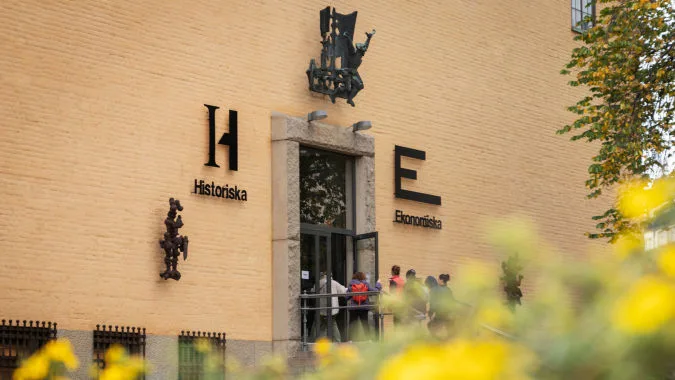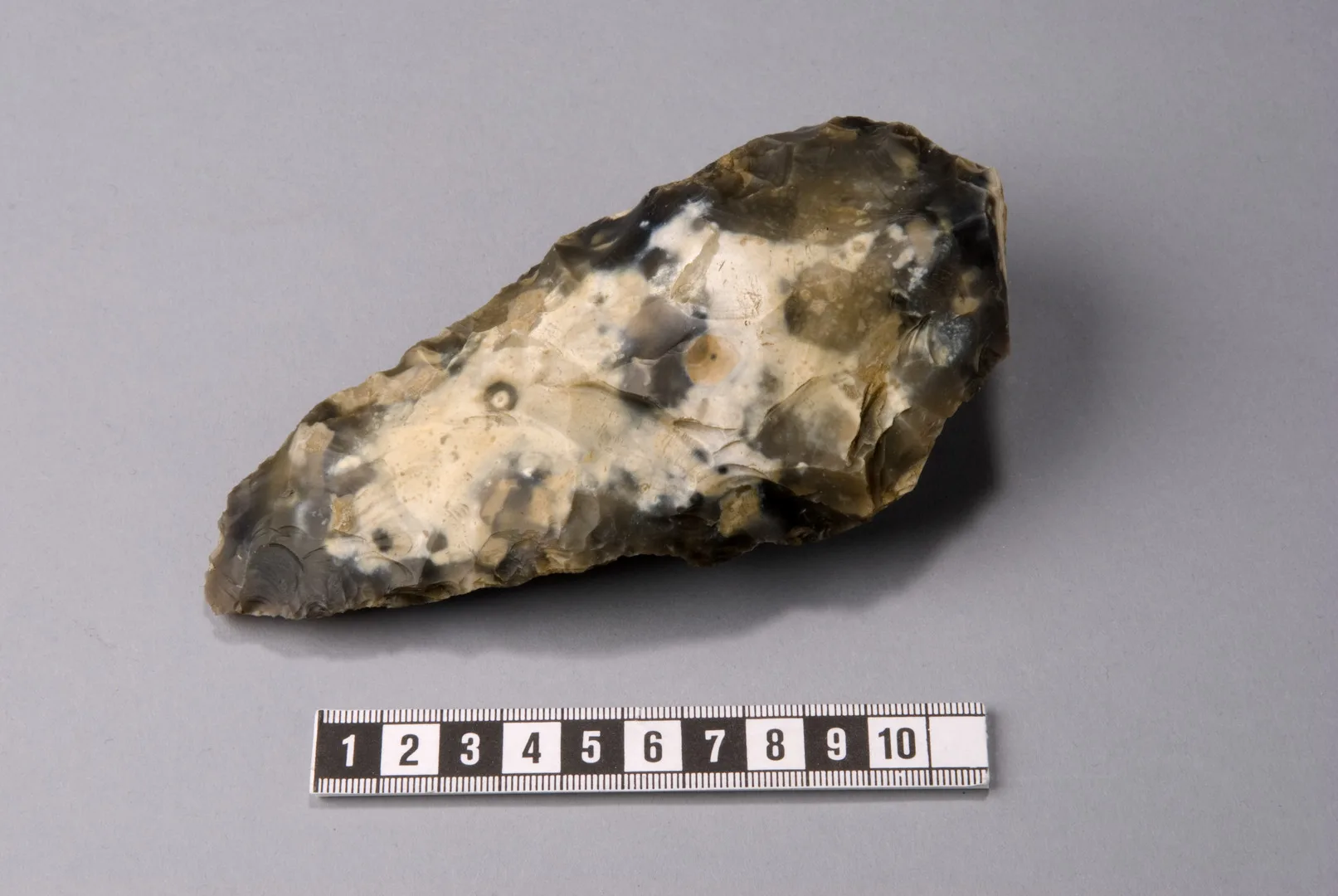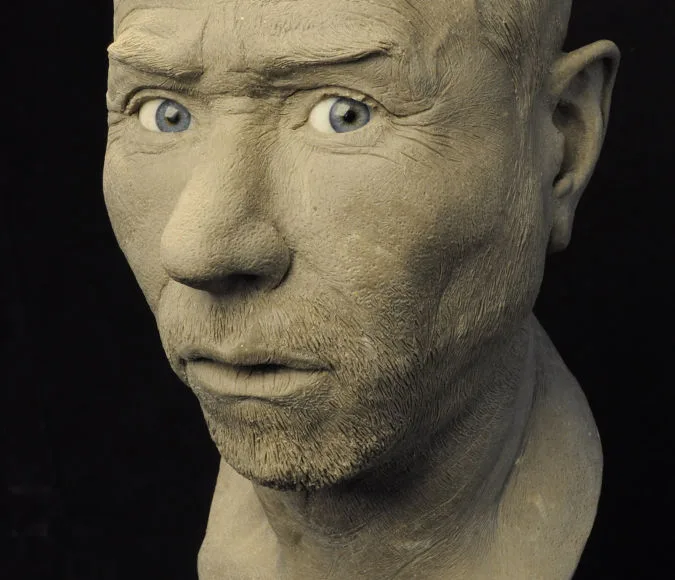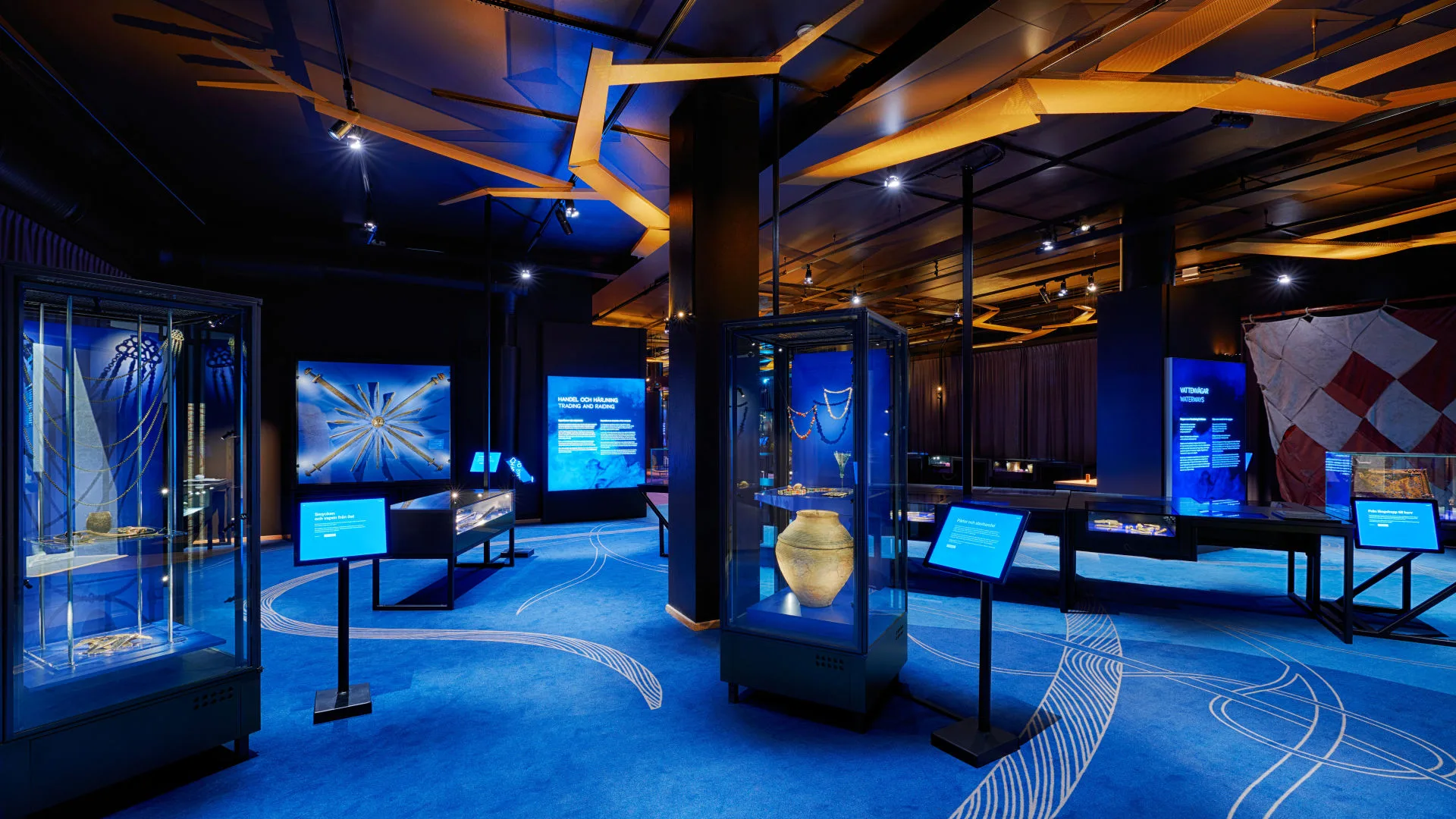
Prehistories
Journey through Sweden's earliest history, long before the country as we know it today existed. You will meet various people, read about their fates and see archeological finds and artefacts from the places where they lived.
These objects may help us to answer questions such as: what were relationships like what beliefs did prehistoric people in Scandinavia have? What did relationships look like? What was their view of death? How did different societal groups coexist? How did Roman objects end up in Swedish graves?

What to know before your visit
- Admission: Free admission for children and youth aged 0–18. See admission fees for adults.
- Cloakroom: The cloakroom is located on the entrance floor. Here you will find lockers with locks. Small bags are allowed inside the exhibition areas. If you want to store larger suitcases, you can borrow a key at the information desk for the larger lockers in the cloakroom.
- Strollers: You are allowed to bring strollers inside the museum, except in the Gold Room.
Accessibility
We strive to continuously improve our accessibility to make it easy to visit us, both on-site and digitally. There are elevators to all floors, accessible toilets on all three levels, and disabled parking close to the entrance. Guide dogs are welcome.
The woman from Barum
One of the oldest known women in Sweden was buried one spring day about 9,000 years ago at Barum (Bäckaskog) in Skåne. During the ceremony she was placed in a pit with her legs drawn up and her hands in front of her breast. When excavated in 1939, archaeologists first mistook her skeleton for a man. They made this assumption because the grave contained hunting weapons. But skeletal analyses by osteologists (bone experts) later disproved this. Modern excavations have revealed that women in prehistoric times often went hunting and fishing, as well as gathering.
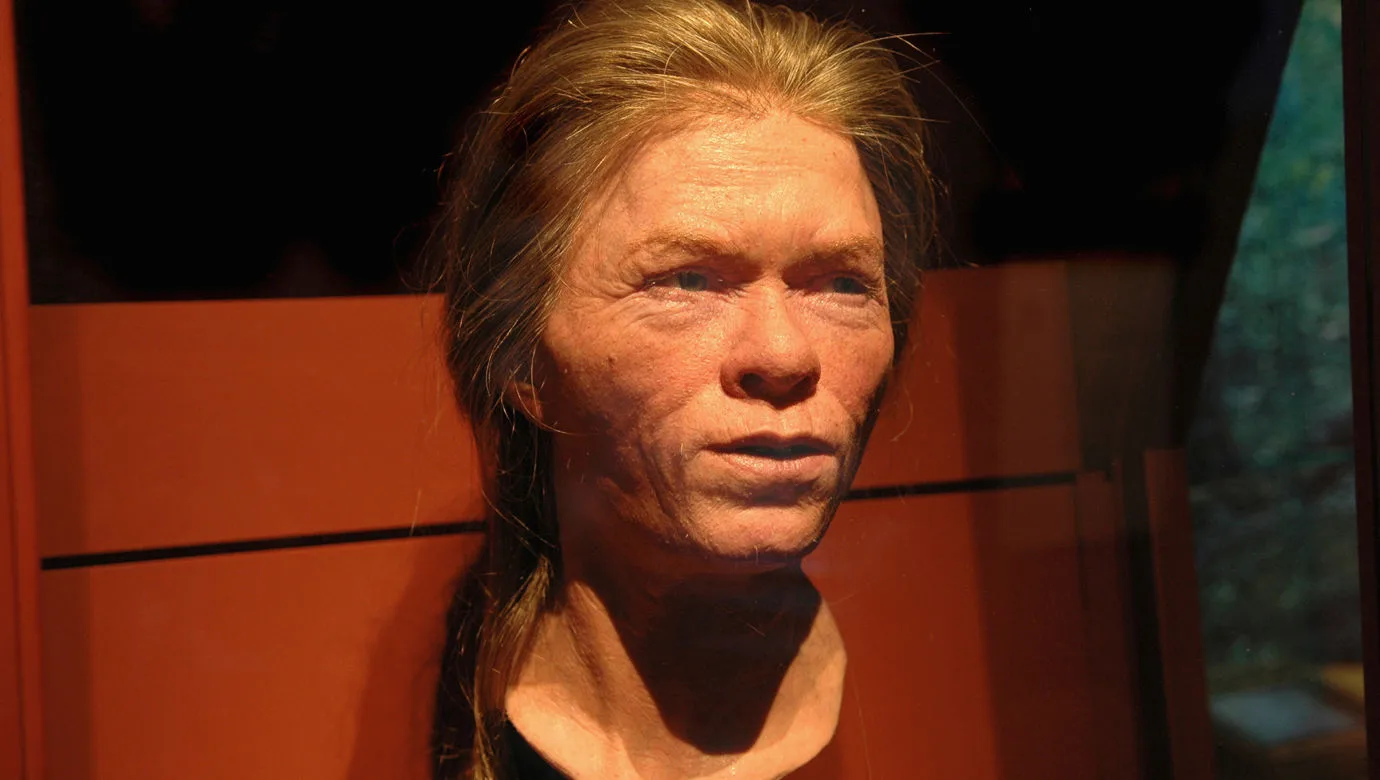
In the exhibition you will also meet an elderly man and a small child who lived in the 6th millennium BC at Skateholm, east of the town Trelleborg. They were buried together. The man lies as if sleeping, facing the child, who has been powdered with red ochre, which archaeologists take to be a symbol of life.
Later on in early agricultural communities, we can see traces of society’s need for communal monuments and memorials. Selected individuals were buried in large stone chamber tombs. In the exhibition, you can see such a grave from western Sweden on display. The grave is a in which over a hundred people were buried in the course of 800 years, between about 3500 and 2700 BC.
Permanent, agricultural settlements enabled people to accumulate more material wealth. Pottery became popular, not only for storage, cooking vessels and tableware, but also as a manifestation of social standing.
The world in Sweden
Contacts between Sweden and the outside world were steadily intensified from the 3rd millennium BC onwards. This can be seen from the possessions of an upper class, established in the 18th century BC. Possessions were buried in great barrows (tumuli), in keeping with the ideals of the new age, along with jewellery and weapons of bronze and gold. Objects from male graves included swords, which were an innovation. The objects were often big and flashy, richly decorated with spirals and abstract patterning. The wealth of this upper class was probably based on control of metal imports; no metals were extracted in Scandinavia at this time. This social structure has survived well into historical times. The artefacts you see in the exhibition were status symbols of power and affluence. Some have been found in bogs and lakes, as they were sacrificed to gods and goddesses.
The art of bronze casting came to Scandinavia in about 1800–1700 BC, and traces have been unearthed on many settlement sites. You can see clay crucibles for melting copper and tin, as well as soapstone casting moulds. Aside from metals, people continued using stone, wood and horn for making tools and other artefacts all through prehistory.
Rock carvings and runes
During prehistory, people communicated with each other, and probably also with the gods, through a pictorial language, rock carvings. These are to be found on many outcroppings in the landscape or on boulders.
Sweden's first real writing, in the form of runes, can be seen on stones from Blekinge and Gotland. Runic script goes back nearly 2,000 years. It is believed to have been inspired by the Latin alphabet, but its alphabetical order is quite different, suggesting that runes were devised at some distance from the Roman Empire, perhaps in southern Scandinavia.
Influences from the Roman Empire
Roman influences extended well beyond the confines of the Empire itself, all the way up to Scandinavia. An example of the Roman Empire's influence on Swedish society can be found in objects from a young woman’s grave from Gårdlösa in Skåne. She wore a silver fibula, or dress pin, with the name “ek unwodz” (I Unvodz) scribed in runes on the back. We do not know whom this name refers to – perhaps the young woman, perhaps the person who made the fibula, or perhaps the fibula itself? This woman lived in the 3rd century, at the same time as a man also buried in Skåne, in Öremölla. Both of them belonged to a privileged social class influenced by the technology, art and fashion of the Roman Empire.
The man from Öremölla had adopted a Roman lifestyle. He was buried with a complete Roman drinking set of bronze with serving vessels, a ladle and wine strainers. The two drinking glasses are of superb quality and were probably made by an Egyptian or Syrian glassblower.
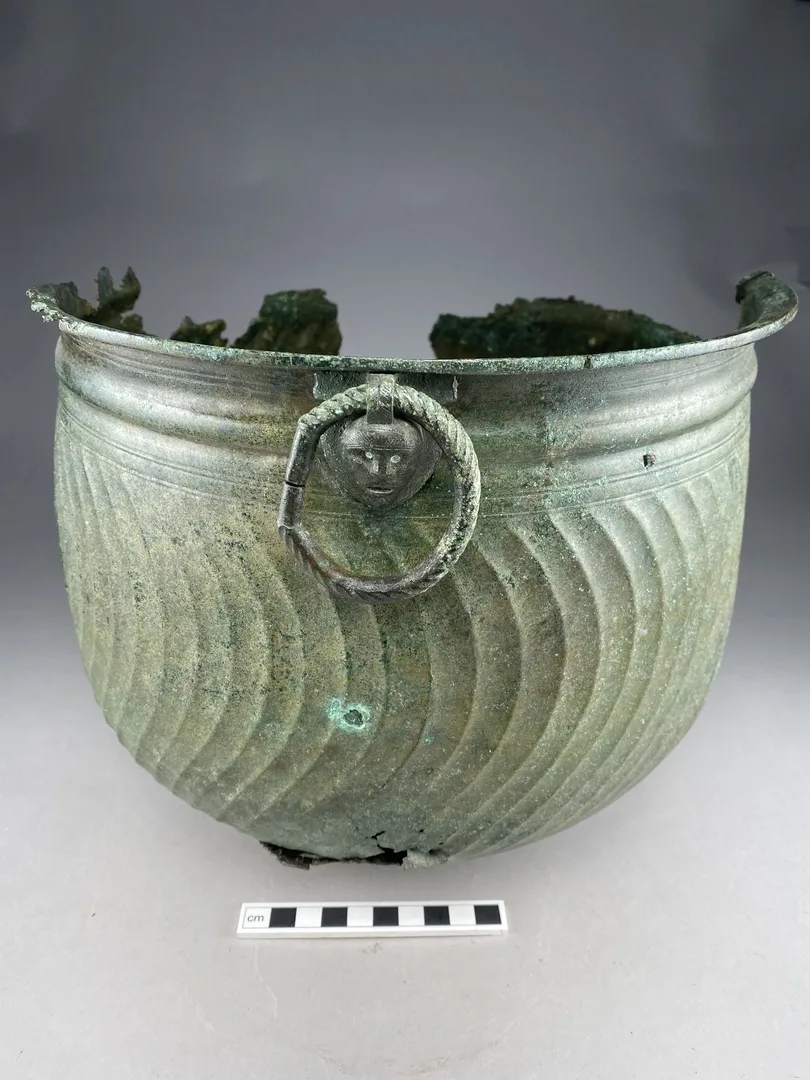
Roman drinking set
On view at Historiska museet in the exhibition Forntider 1
Figurative art now superseded the more abstract decoration of preceding ages, showing an abundance of fabulous beasts, not all of them readily understandable. Look at the magnificent relief brooches which adorned women’s costumes in the 5th and 6th centuries and were found in Jämtland, Hälsingland and Uppland.
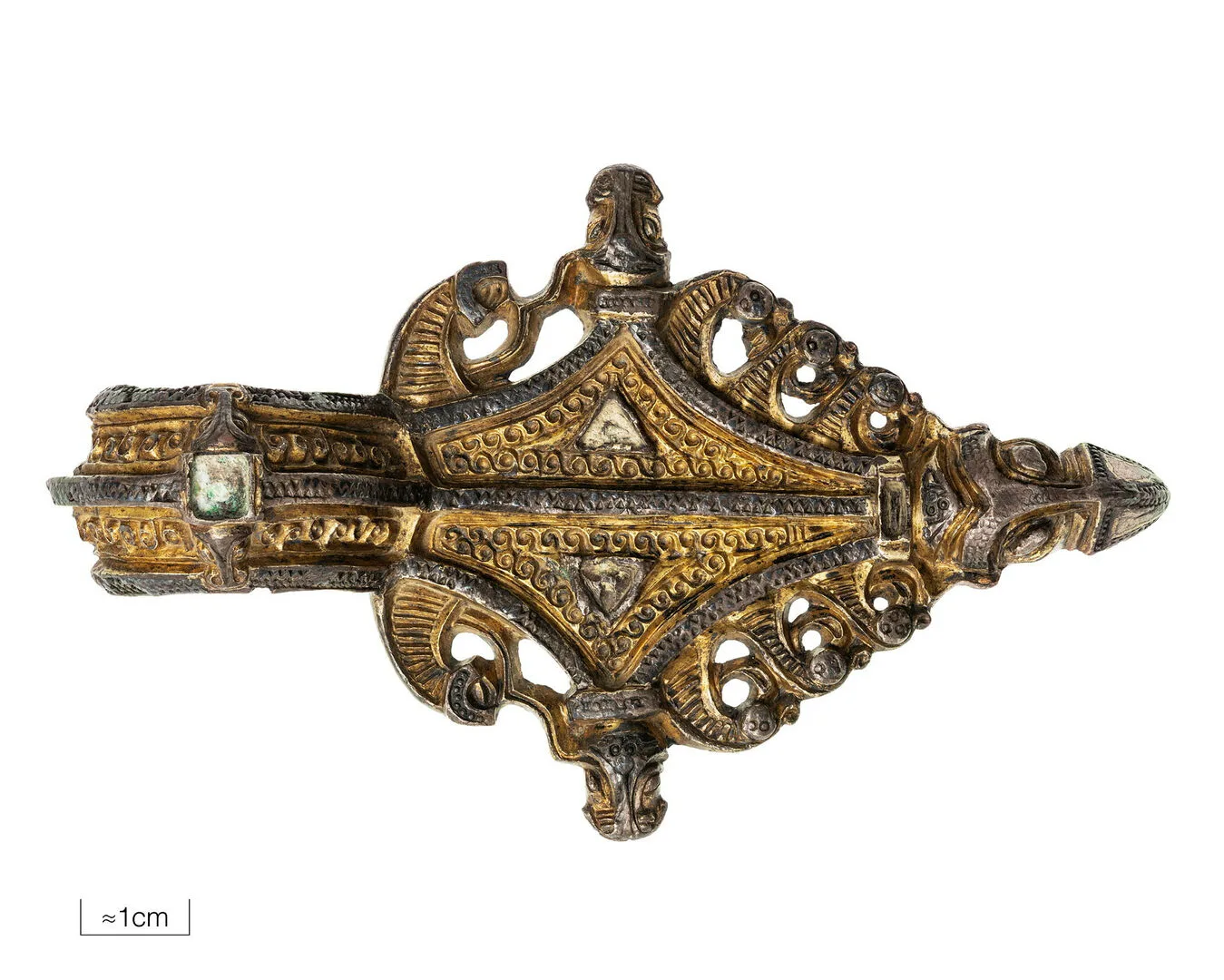
Relief brooch
On view at Historiska museet in the exhibition Forntider 1
Housing
Rather like our present-day living room, the hall was the main room of dwellings. The hall became an especially important social venue from the 5th century onwards. There you could flaunt your opulence and social standing and hold generous banquets. Food was important. Large iron cauldrons were suspended on stout chains over the great hearth. You can see one such pot in the exhibition, with iron forks and an exclusive bronze plate beside it. Kitchen equipment like this could be found in graves of the upper class, for use in the life hereafter.
At banquets, people played board games and musicians entertained them on the lyre. This was the kind of milieu frequented by an aristocrat from Uppland, whose weapons and ornamental helmet were masterpieces made by skilled craftsmen.
A similar life was led by an upper-class woman from Öland. Her grave gifts included a large beaded necklace. Those artefacts are now fragments, the dead woman having been cremated on a funeral pyre. Both these people lived in the 8th century; in the exhibition you will see finds from their burials.
The hall was also a setting for religious rites and the telling of myths and sagas. You can see small, partly gilded male fertility figurines, and miniature gold foils of couples kissing, unearthed in Södermanland and Uppland. The kissing gold foil figures may represent Frey, the god of love, and the giantess Gerd, both of them figures of Old Norse mythology.

